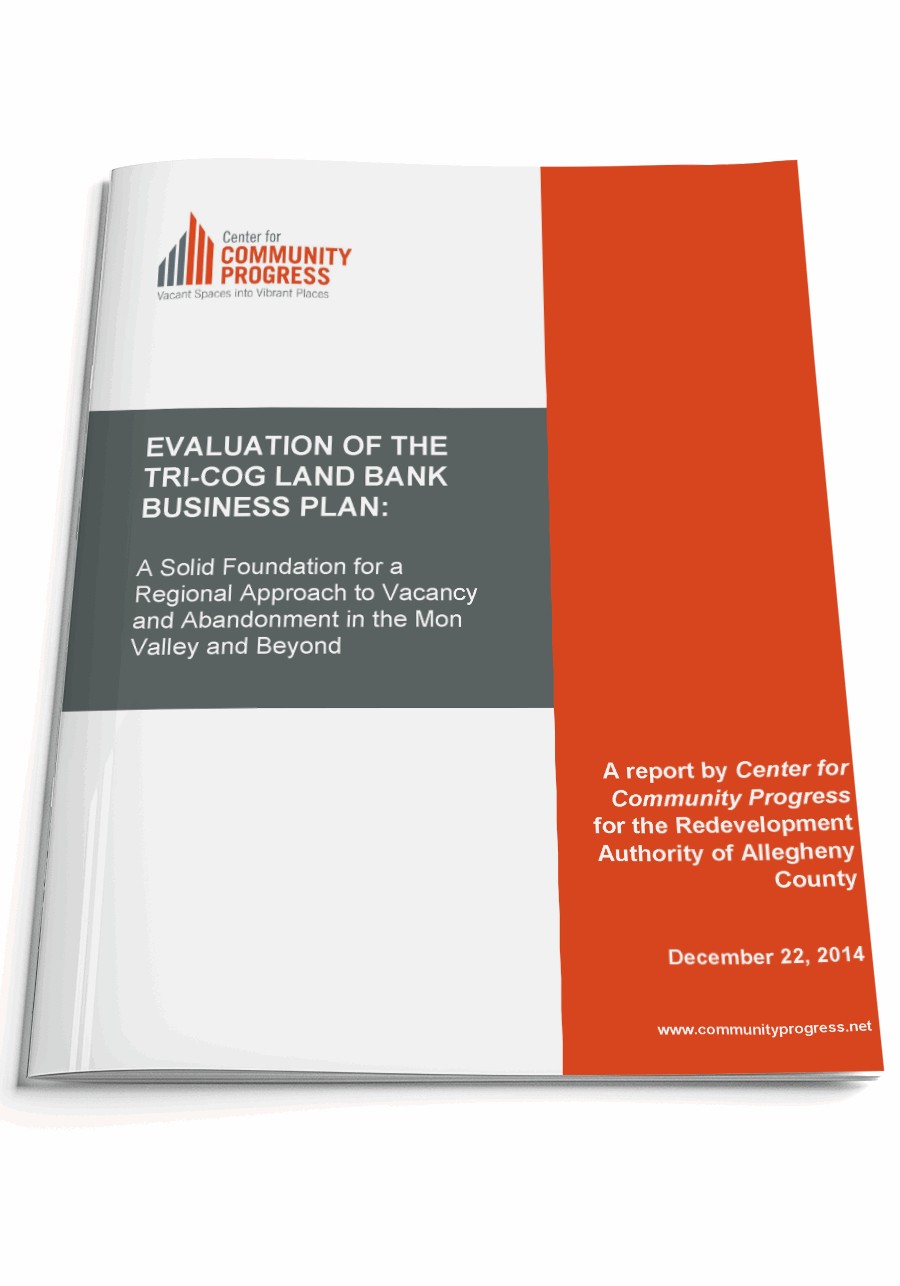Evaluation of the Tri-COG Land Bank Business Plan
A Solid Foundation for a Regional Approach to Vacancy and Abandonment in the Mon Valley and Beyond
Topic(s): Land Banks, Local Analysis
Published: December 2014
Geography: Pennsylvania
Author(s): Center for Community Progress
Throughout the country, land banks are playing a critical role in building strong communities and ensuring that problem properties are reused in ways that support the vision and meet the needs of local residents. Land banks are most effective when they are part of a comprehensive and coordinated blight prevention strategy that is directly linked to the tax collection and foreclosure process, operated in response to local land use goals, driven by transparency and accountability, engaged with residents and community stakeholders and aligned with other local and regional programs and partnerships.
The proposed Tri-Council of Government (“Tri-COG”) Land Bank presents a unique opportunity to address the economic, social and environmental impacts of blight and abandonment in the Mon Valley of Pennsylvania and beyond through a regional and comprehensive approach. Over the past few years, the leadership of the Steel Valley, Turtle Creek Valley and Twin River COGs have recognized that blight and abandonment transcend boundaries and will require a scale of effort that is larger than the capacity of any one municipality. As a result, the TCC Leadership Team has engaged their member municipalities, school districts, Allegheny County and other regional stakeholders in extensive discussions and analysis of the challenges and opportunities to addressing the high levels of vacancy and abandonment found in the former steel mill towns in Mon Valley as well as the surrounding suburban communities. This multi-year regional discussion and local coordination around a shared goal to more effectively fight the blight has culminated in the Tri-COG Land Bank Business Plan, which Community Progress evaluates in this report.
This report details both recognizes and commends key elements of the Business Plan and details areas for further expansion and improvement.
There is an undeniable need for effective new interventions to build upon existing efforts to reverse the trend of blight and abandonment in Allegheny County, from the resourceconstrained former steel mill towns in Mon Valley to outlying suburban and rural communities. The proposed Tri-COG Land Bank could serve as a key component within a more comprehensive and coordinated blight prevention strategy as well as a model of success on how to enact regional collaboration, build consensus around a shared vision, and coordinate actions and investments by multiple levels of government to achieve healthier, safer, and more vital communities for all.

Topic(s): Land Banks, Local Analysis
Published: December 2014
Geography: Pennsylvania
Related Publications
Other Related Content
Subscribe to join 14,000 community development leaders getting the latest resources from top experts on vacant property revitalization.
